|
|
|
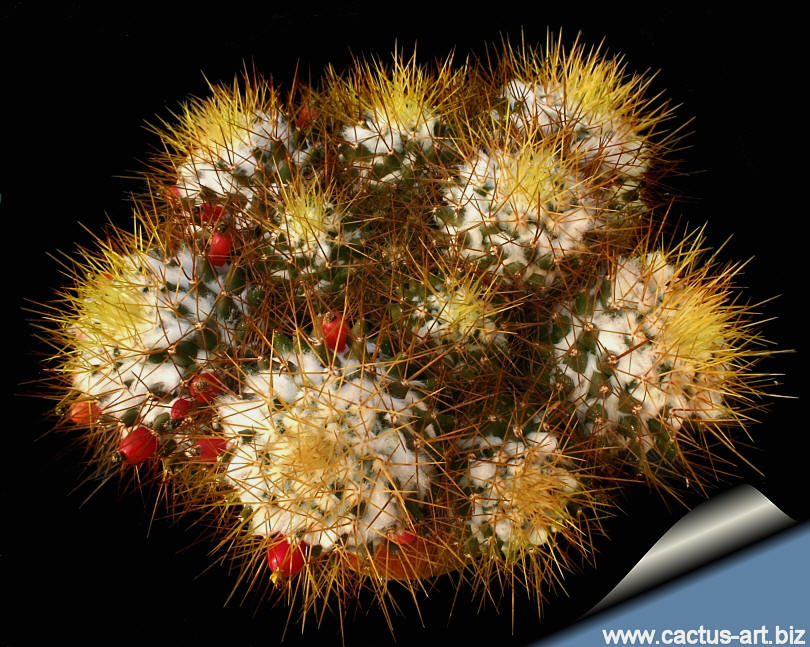
Mammillaria nivosa is one of the wooliest mams with
beautiful golden-yellow-spines.
|
|
Description:
Solitary but usually offsets a lot (mat forming). Old and well developed
groups up to 40cm in diameter (or more).
Stem: Globose to short cylindrical, dark green to bronze, 8 - 10
cm in diameter. With latex.
Parastichy: 8 - 13, 11 - 17 and 13 – 21.
Tubercle: Obtusely conical, laterally compressed.
Axil: Densely woolly.
Radial spine: 6 - 13, straight and very sharp bright yellow to
dark brown, to 20 mm long.
Central spine: Usually 1, similar to radials.
Flowers: Diurnal 2 cm yellowish. Stigmas yellow.
Blooming season (Europe): Early spring.
Fruit: Club shaped, dark red,
Seed: Brown.
|
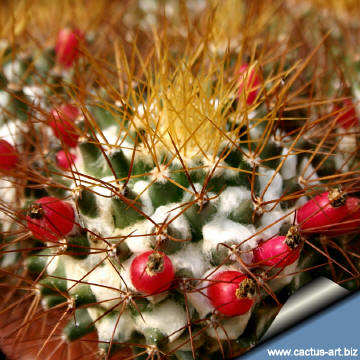 |
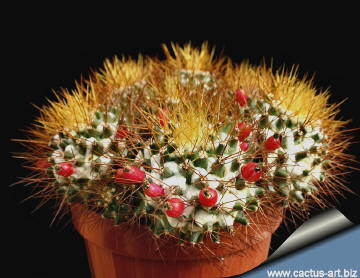
After producing several rounds of blooms earlier in the year it will
give strikingly bright red fruit.
This is a really beautiful cactus. |
|
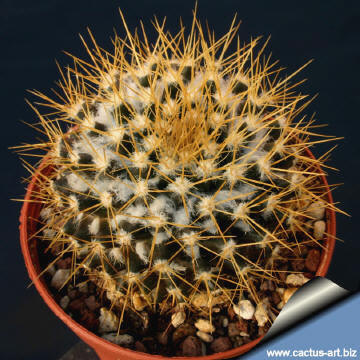 |
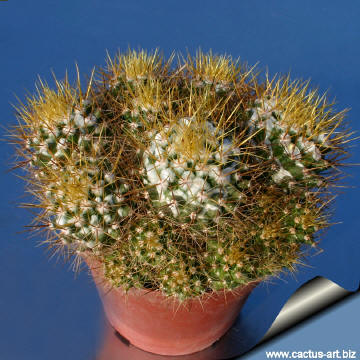
|
|
Advertising
|
|
|
|
|
|
|
Family:
Cactaceae (Cactus
Family)
Scientific name:
Mammillaria nivosa
First description: by Link ex Pfeiffer
1953
Published in:
Enum.
Cact. 11 (1837)
Origin: Carribean. (West Indies, Cuba)
Conservation status: Listed in
CITES appendix 2.
Common Names include: Woolly Nipple Cactus
Bibliography:
John Pilbeam (1999) - Mammillaria The Cactus File Handbook - page 207.
Edward F. Anderson (2001) - The Cactus Family - page 434.
Synonyms:
- Cactus flavescens
- Mammillaria flavescens
- Mammillaria flavescens misapplied
- Mammillaria flavescens var nivosa
- Mammillaria simplex var. flavescens
|
|
|
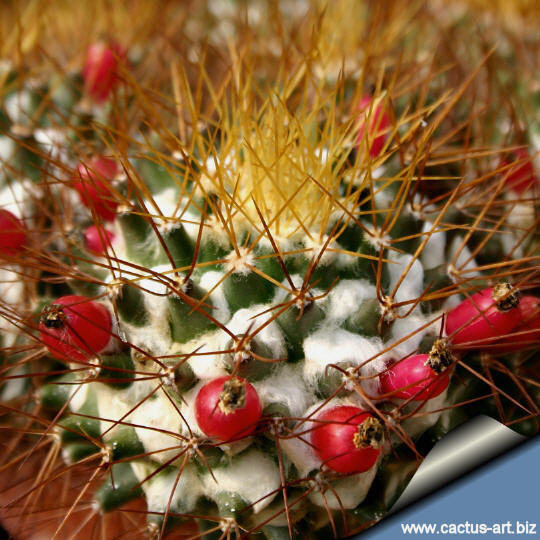
The bright red fruit contains seeds. You can plant these seeds to have
small Mammillaria nivosa in the next few months.
Cultivation: It is a relatively rapidly growing and
easily flowering species
that will make large clumps given the best conditions.
Most plants will offset readily, and clumps can be produced in a few
years.
Water regularly in summer, but do not overwater (Rot
prone) Use pot with good drainage and a
very porous potting media, keep dry in winter.
Feed with a high
potassium fertilizer in summer.
Avoid any frost. Reputedly sensitive to low temperatures,
but less so if kept on the dry side prior to, and during, cold weather.
Outside full sun or afternoon shade, inside it needs bright light, and some
direct sun. Tends to
bronze in strong light, which encourages flowering and heavy wool and
spine production.
Be careful when you repot Mammillaria nivosa. Its spine is very sharp
and hard. You should use gloves or wrap the cactus with thick newspaper.
They may make it easier.
Propagation: Division, direct sow after last
frost.

 |
|